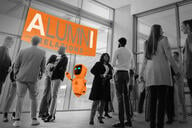You have /5 articles left.
Sign up for a free account or log in.
- Led by students and under our guidance, we are conducting ethnographic research to better understand how our students naturally interface with digital technologies, for personal and academic productivity.
- How do we converge technology decisions with the understanding of these practices before we invest in solutions?
Host design thinking sessions to lift student voices.
- As we think about deploying technologies for pedagogical best practices, we will move to a design thinking process that includes both faculty and students.
- Through a newly founded student organization we advise, we are creating opportunities for design thinking to address student concerns about technology in the curriculum.
Involve students more heavily in committees and IT working groups.
- We are looking at ways we can balance faculty/student representation on technology decision-making committees and working groups that impact teaching and learning.
I believe we serve the faculty and administration better when we invest in technologies that help students drive their own learning. The first step is understanding that learning process from the student perspective.
What other ways can we create direct pathways and bring students into our liminal space?




